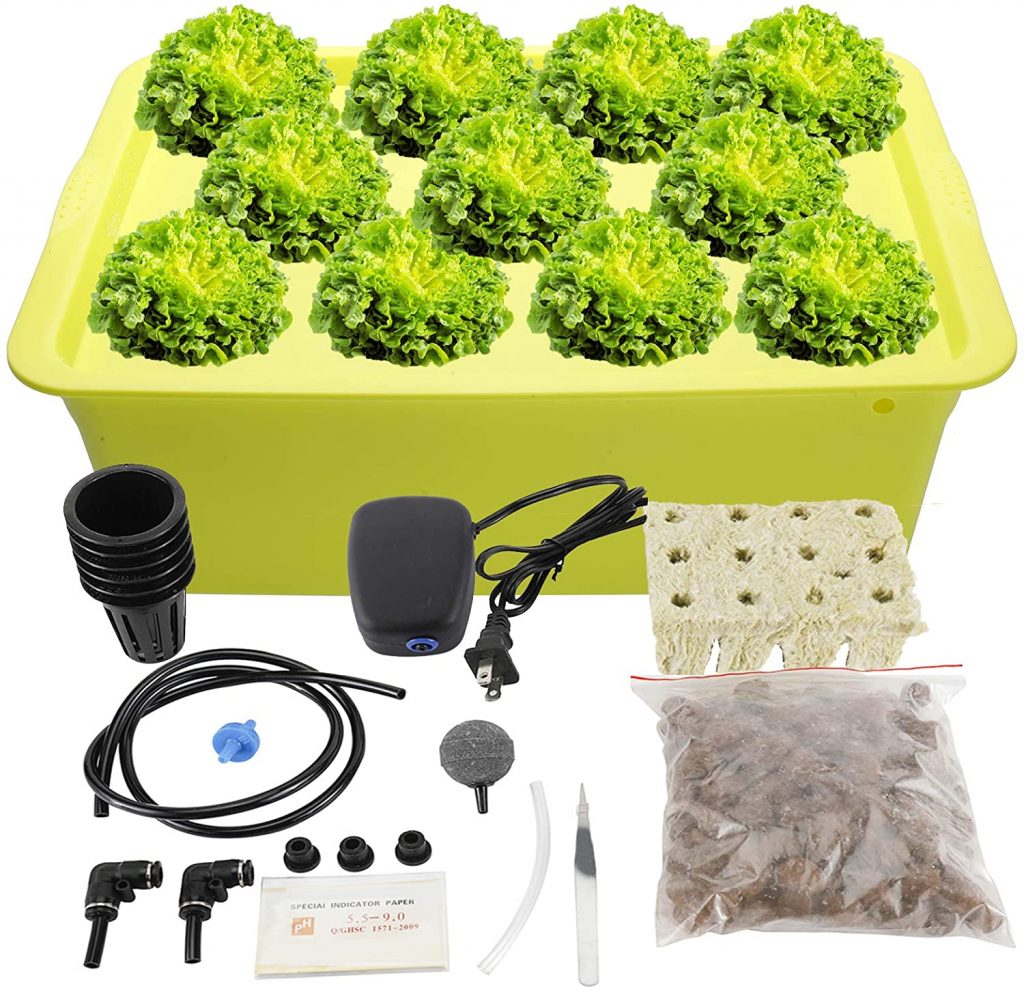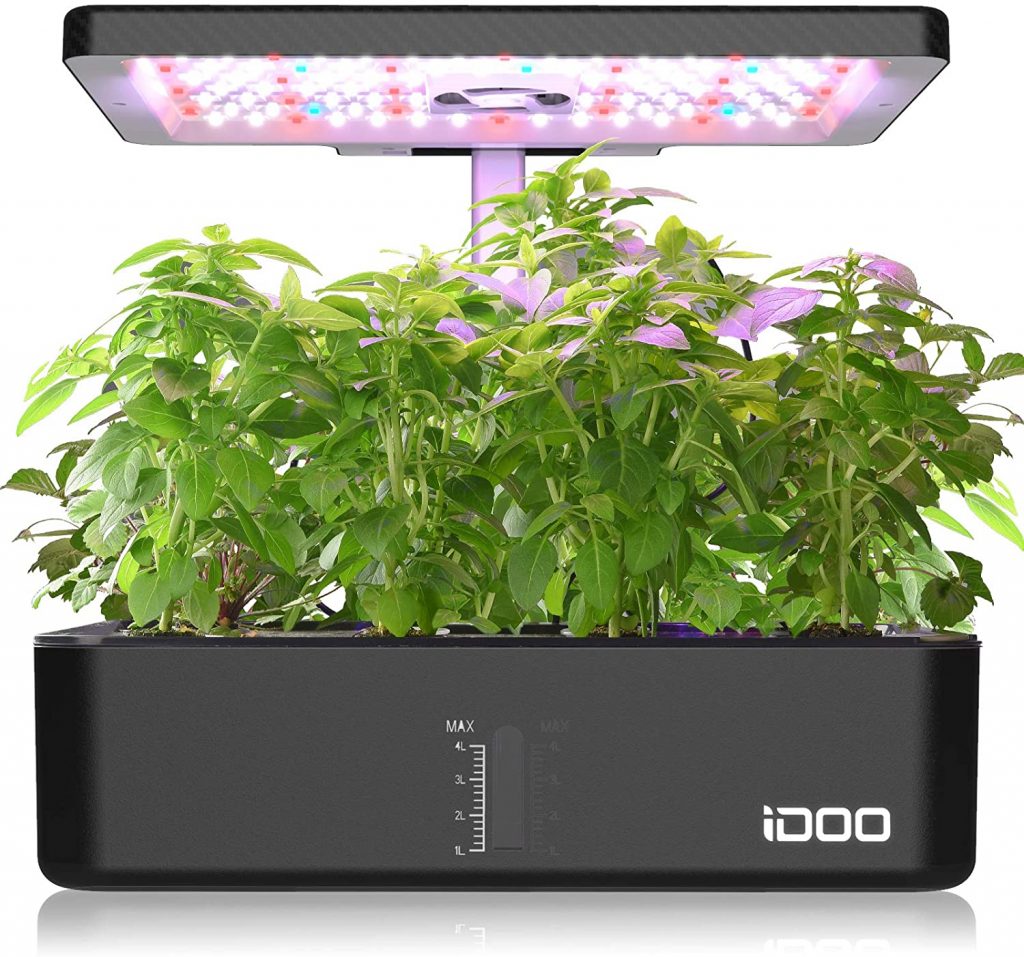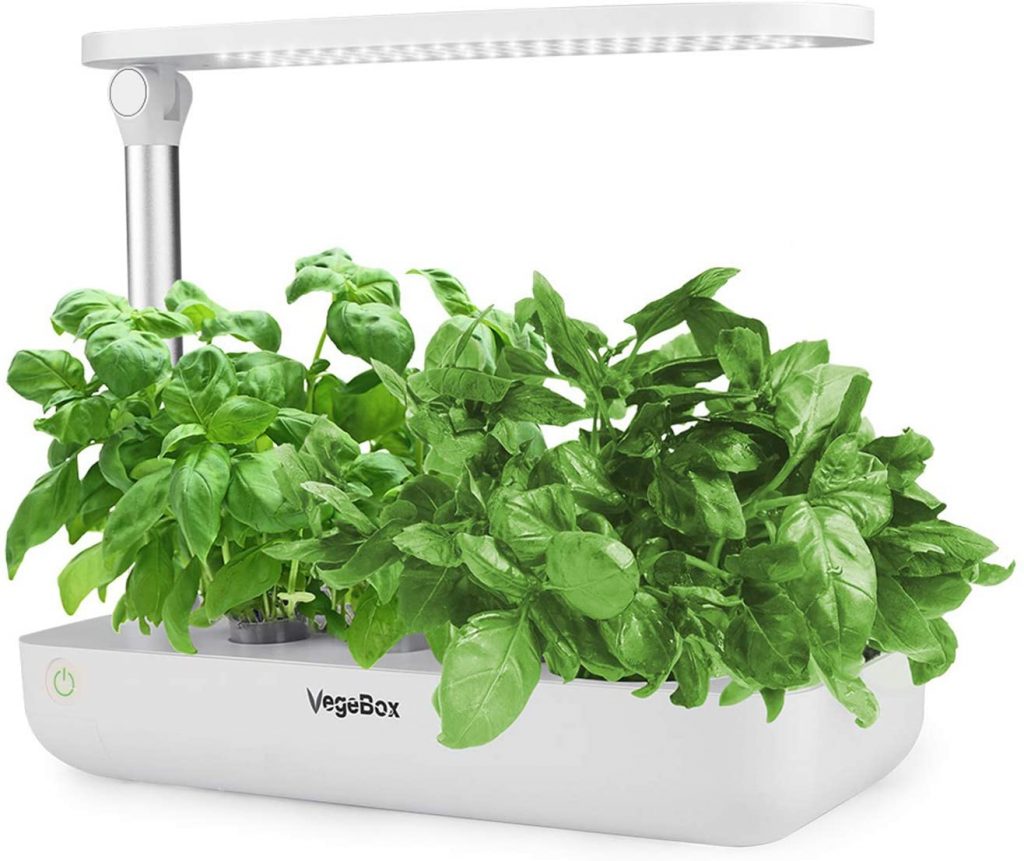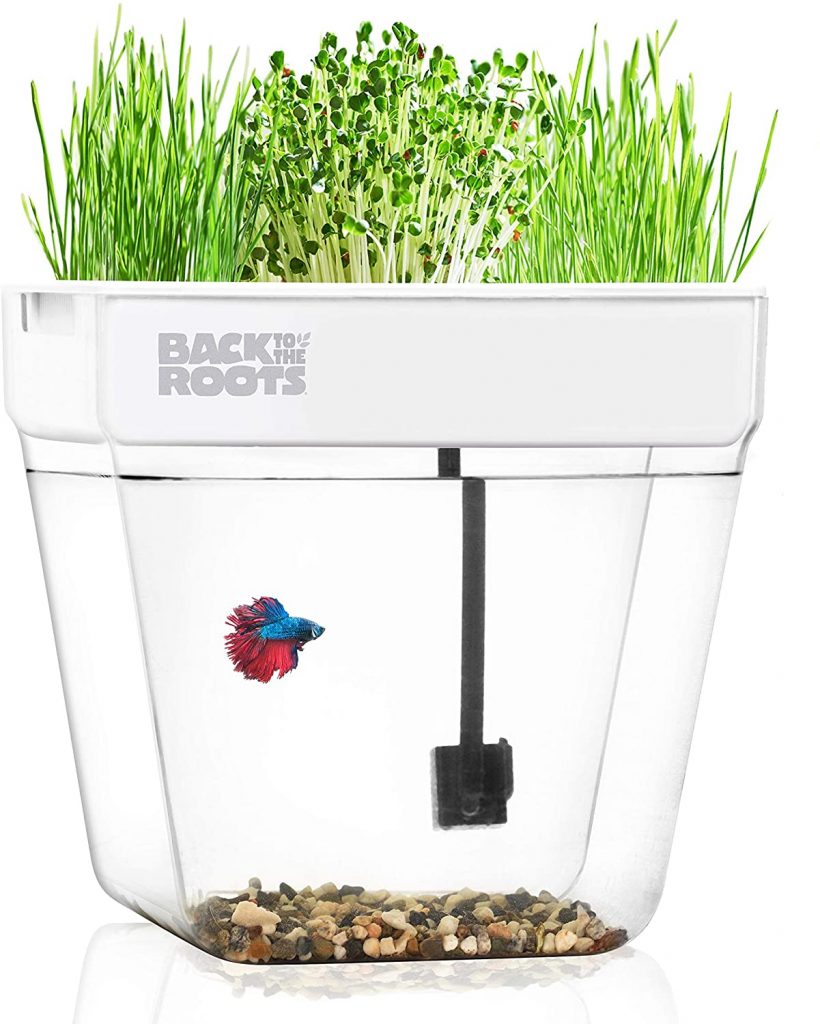
The noticeable rise in the popularity of hydroponic kits comes when both suitable land and weather conditions are increasingly sought after for propagation purposes.
As a gardening enthusiast, you might be asking yourself, “how do I get involved in hydroponic growing?”
Many novice growers may not have the time and/or patience to source the necessary components to establish a suitable propagation system.
That is where complete hydroponic kits come into play.
This article will identify and discuss hydroponic kits as a means for you budding enthusiasts out there to enter into the world of hydroponic-based growing.
This will assist you in purchasing the appropriate grow kit for your new venture into the world of hydroponics.
Climatebiz experts design, research, fact-check & edit all work meticulously.
Affiliate Disclaimer
Climatebiz is reader-supported. We may earn an affiliate commission when you buy through links on our site.
7 Budget-Friendly Hydroponic Kits
1. Homend Indoor Hydroponic Grow Kit

Despite being the cheapest of the lot, this hydroponic kit allows you to grow up to 11 plants at once.
It’s versatile in that you can use it as part of both indoor and outdoor grow setups in a variety of environments, and it takes up very little space.
The kit is easy to set up making it very convenient for first-time growers, and it comes with a detailed set of instructions.
Finally, it’s made out of food-grade PVC-U materials, making it perfect for food cultivation.
2. HighFree Hydroponic System Growing Kit

This hydroponic kit by HighFree comes with almost everything that you need to jump into a first-time grow. All you need to add are your own nutrients and seeds/plants, and you’re good to go.
Suited to indoor vegetable growers, it’s perfect for anyone looking for a setup that requires minimal space — you can even place it in an easy-to-reach spot if needed while doing the cooking.
The kit provides space for 11 plant sites and is self-watering.
3. Hydrofarm Root Spa Deep Water Culture Bucket System

The Root Spa by HydroFarm is a great example of a DWC system.
It’s comprised of a 5-gallon bucket system that is simple, yet effective in its ability to grow larger plants with ease.
This water-tight bucket system comes with a small single-outlet air pump that allows for oxygenation of the nutrient solution without the need to use air stones.
Its forgiving, inexpensive and easy-to-use nature makes it a perfect hydroponic kit for beginners. Once you realize how much you enjoy it you can upgrade to the 4 or 8-bucket system — both of which come with larger outlet air pumps.
4. iDOO Hydroponic Growing System

IDOO has truly outdone themselves with this sublime, best-selling hydroponic starter kit.
The high-performance 23-Watt LED lights make this 12-pod indoor system a winner, no matter the weather.
The system comes with 2 “smart grow modes” for fruits and vegetables.
That, combined with the height-adjustable LED fixture makes for a product that is incredibly versatile.
The best part of it all — it’s suited to growers of all skill levels.
5. Vegebox Hydroponics Growing System

An aesthetically pleasing addition to our list comes in the form of the VegeBox Hydroponics Growing System.
This grow kit comes with a 1.2 L water tank, 9 planting seed pods, and even contains 2 bottles of nutrient solution.
Additionally, this hydroponic kit comes with an adjustable, eco-friendly, full-spectrum set of LED grow lights controlled by a Smart LED Control System.
Best suited to anything from herbs to tomatoes, strawberries, and lettuce.
6. Sidasu Hydroponic Grow Kit

This single-layer system by Sidasu comes with 36 sites spaced out over 4 pipes — the most growing sites on the list thus far.
If that still doesn’t satisfy you, you can go for their 3 layer/12 pipe system instead.
This simple to assemble hydroponic kit makes use of a timed circulation system and is manufactured out of food-grade PVC-U material.
It is very user-friendly and requires no prior growing experience.
7. Back To The Roots Water Garden

Deciding between your fish hobby and getting into hydroponics? No need.
Our final and most unique hydroponic kit option comes in the form of a self-cleaning fish tank that can actually grow food.
From microgreens to houseplants, this system can do it all, and at an affordable price.
It functions by utilizing fish waste as fertilizer for the plants and in turn, the plants help to keep the water clean.
Absolutely everything is included, from organic microgreen seeds to fish food – just not the fish.
As an added bonus it comes with a free STEM curriculum on aquaponics and hydroponic systems to encourage kids to learn more about it.
u003cstrongu003eRelated Reading: u003c/strongu003eu003ca href=u0022https://climatebiz.com/best-vertical-hydroponic-systems/u0022u003e6 Best Vertical Hydroponic Systems On The Market Today (Buyers Guide)u003c/au003e
What Is Hydroponics?
To understand what a hydroponic kit is, we first have to discuss hydroponics briefly.
Fundamentally, hydroponic growing uses a nutrient-rich, water-based solution in place of soil as a growing medium for plant propagation.
With this method, nutrients are fed directly from the solution into the roots of the plants.
Additionally, plants can access ample oxygen, allowing for greater quality produce and noticeably less time between yields.
There are numerous other benefits to utilizing hydroponic systems over traditional soil-based cultivation techniques. One significant advantage is the ability to save space.
This is achieved through the use of customizable nutrient solutions that are perfectly calibrated to provide a continuous stream of nutrients to the plants.
As a result, root systems do not need to spread throughout a large area of soil to take in adequate nutrients. As such, you’re able to place them closer together and save on space.
Related Reading: DIY Hydroponic Nutrients (How To Make Your Own Formula)
What Are Hydroponic Kits?
Now that you have a basic idea of what hydroponics entails, we can move on to hydroponic kits.
Here are the key features of a hydroponic kit:
Growing Chamber
This component assists in maintaining optimal conditions for the plants. It does this by helping to control factors such as temperature, light and protecting plants from possible pest infestations.
Reservoir
A suitable reservoir is at the heart of every hydroponic kit. Here lies the water that holds the nutrient-rich plant solution required for hydroponic grows. Depending on the setup, they can also be used as an additional growing chamber.
Growing Media
The substitute for soil, though they do not provide the plants with nutrients independently. Instead, they act as a catalyst for nutrient transportation. This is achieved through their porous structure which absorbs and retains both moisture and nutrients. Additionally, they work to support the plants.
Air Stones/ Air Pumps
Plants that are submerged without sufficient oxygenation can drown very quickly. To avoid this, hydroponic kits make use of air stones/air pumps. Together, these components provide sufficient aeration in the solution by means of tiny oxygen bubbles. This also helps to distribute nutrients among the roots equally.
Net Pots
These are mesh planters that you can use to hold your plants. Their structure facilitates greater exposure to both nutrients and oxygen. They also allow for a greater degree of drainage.
Lighting
Though not always a standard component of hydroponic kits, some more expensive kits come with grow lights. These lights imitate the sun and help to carry out photosynthesis. This makes them extremely beneficial in setups where natural light is hard to come by.
Related Reading: 1000 Watt LED Grow Light (All you need to know)
What Is The Easiest Hydroponic System To Use?
You may find yourself lost in the hundreds of hydroponic kits and systems that are available today
These variations fall under 6 main types of hydroponic systems. We will focus on one of the most suitable options for beginners — the Deep Water Culture (DWC) system.
If you’re a novice, the name may give the impression that this method is complex. Rest assured, it is a relatively simple system to understand.
The DWC system is labeled as such for the following reasons:
- Your grow will take place within a reservoir holding a significant amount of water.
- The amount of root mass continuously submerged in water.
Process
In a DWC system, roots are suspended over a reservoir filled with an oxygenated, nutrient-rich, water-based plant solution. This allows the roots to receive a steady uptake of oxygen, nutrients, and water.
Air pumps and air stones supply oxygen. These two components work in tandem, ensuring that the solution is aerated enough by dissolving bubbles so that the plants don’t drown.
Yes, plants can drown. The roots suck up available oxygen from the water solution. If you don’t constantly replace the oxygen, you can say goodbye to your grow.
FAQs
Can hydroponic systems be used to grow all types of plants, or are they more suited to specific kinds?
While a wide range of plants can be grown using hydroponic systems, they are particularly well-suited for leafy greens, herbs, and vegetables due to the systems’ ability to efficiently deliver nutrients directly to the plants’ roots.
However, with the appropriate setup, modifications, and care, many fruiting plants and flowers can also be cultivated hydroponically.
How often does the nutrient solution in hydroponic systems need to be changed?
The frequency of changing the nutrient solution in a hydroponic system largely depends on the system type, plant types, and growth stages.
Typically, many growers change the nutrient solution every 1 to 2 weeks to ensure optimal nutrient availability and to maintain appropriate nutrient concentrations and pH levels.
What is the initial cost of setting up a basic hydroponic system compared to a soil-based garden?
Initial setup costs for a hydroponic system can be higher than a traditional soil-based garden due to the need for specialized equipment like reservoirs, air pumps, and grow lights.
However, hydroponic systems often offer higher yields, faster growth, and lower water and nutrient consumption in the long run, potentially offsetting the initial investment over time.
How much time does it take daily to maintain a hydroponic system?
Maintenance time for hydroponic systems can vary depending on the complexity of the system and the types of plants being grown.
On average, a small to medium-sized hydroponic system may require around 30 minutes to an hour per day for tasks such as checking and adjusting nutrient levels, monitoring pH, and observing plant health and growth.
Are hydroponic vegetables and fruits as nutritious as those grown in soil?
Yes, fruits and vegetables grown hydroponically can be as nutritious, if not more so, as those grown in soil.
In hydroponic systems, nutrient delivery to plants is precisely controlled, allowing for optimal nutrient uptake and potentially leading to produce with higher nutritional content. However, the nutritional value also depends on the type of nutrients provided in the water solution.
Is there a risk of contamination or disease in hydroponic systems, and how can it be mitigated?
Yes, there can be risks of contamination or disease in hydroponic systems, primarily due to the closed environment and shared nutrient solution. Diseases can spread rapidly if not promptly addressed.
To mitigate these risks, it is crucial to maintain a clean growing environment, regularly monitor plant health, promptly remove infected plants, and ensure the nutrient solution is well-balanced and free of pathogens.
Regularly changing the nutrient solution and cleaning the system can also help in preventing the spread of diseases.
Final Thoughts
It’s time for you to get out there and grab that first grow kit of yours.
It may seem a bit overwhelming at first but there’s an abundance of fantastic hydroponic kit options out there!
So take the first step towards being part of the hydro community, and if you already have, feel free to detail your experiences in the comment section below!


